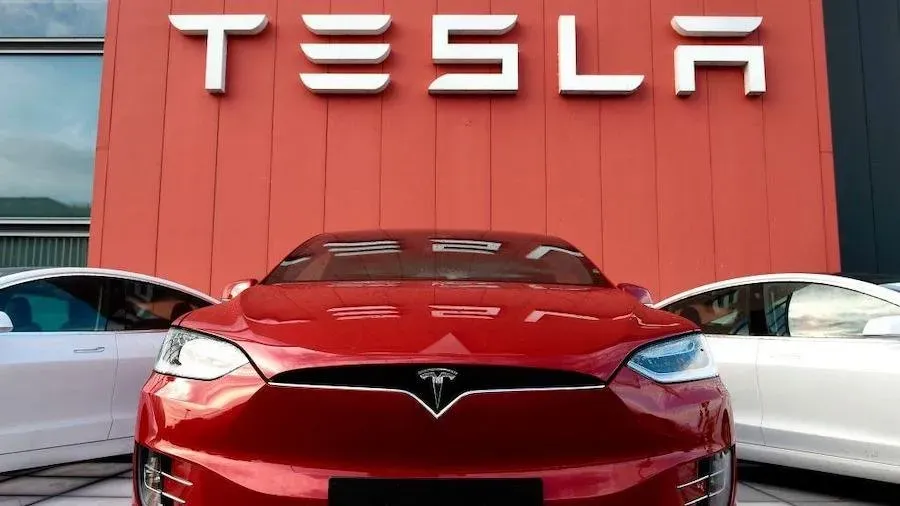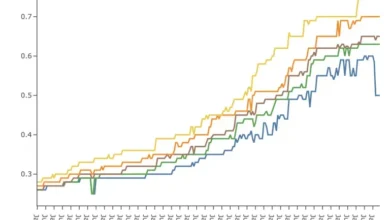Tesla Deliveries Q1: A Decline in Vehicle Sales

Tesla deliveries Q1 revealed a significant trend within the electric vehicle market as the company reported a 9% decline in vehicle shipments compared to last year, marking its first quarterly drop since the pandemic’s onset in 2020. With approximately 387,000 cars delivered, Tesla regained its title of the world’s largest EV producer from BYD, which saw an even more dramatic 42% decrease in deliveries. This setback sent Tesla’s stock performance spiraling down by 5%, raising concerns among investors amidst a challenging start to the year. The decline in Tesla’s vehicle sales reflects a broader trend impacting the industry, as demand for all-electric vehicles softens, influenced by various factors including economic uncertainties and increasing competition. As the market adapts, Tesla’s reliance on aging models like the Model Y and Model 3 raises questions about its sustained growth in an evolving landscape dominated by rising hybrid sales and alternative manufacturers.
In the latest quarter, Tesla’s performance highlights the turbulent waters within the electric vehicle sector, with a notable reduction in vehicle deliveries compared to the previous year. Faced with increased competition from manufacturers like BYD, who have also seen a substantial drop in production numbers, Tesla is navigating through a challenging environment marked by shifting consumer perceptions and market dynamics. The current decline in EV sales reflects a broader hesitation among potential buyers, influenced by factors such as environmental skepticism and cost considerations. Meanwhile, Tesla has begun to adapt its strategy by reducing prices and entering the realm of advertising—approaches it had resisted in the past. As the automotive landscape evolves, this situation underscores the critical need for established players to innovate and respond to customer needs to maintain their foothold in an increasingly competitive market.
Tesla Deliveries Q1: A Closer Look at the Decline
In Q1 of this year, Tesla delivered approximately 387,000 vehicles, marking a 9% decline compared to the same quarter last year. This downturn is significant as it signals the first quarterly drop in sales since the onset of the pandemic in 2020. The decline raises concerns about Tesla’s ability to sustain its dominance in the electric vehicle (EV) market, especially as competition from manufacturers like BYD continues to grow. Despite regaining the title of the world’s largest EV producer, this dip highlights the challenges Tesla faces in a rapidly evolving industry.
The drop in Tesla deliveries in Q1 can be partially attributed to various market dynamics including rising skepticism among consumers regarding electric vehicles. Previously firm believers are now questioning the environmental benefits of going electric, which may be contributing to an overall softening in demand for all-electric vehicles. This trend, coupled with increased competition, could pose significant risks to Tesla’s market share and stock performance moving forward.
Impact of BYD Deliveries on Tesla’s Market Position
While Tesla’s deliveries fell, BYD faced an even sharper drop of 42% in their deliveries. This significant decrease has allowed Tesla to reclaim its position as the leading EV manufacturer, but it also underscores a larger issue affecting the entire electric vehicle market. As both companies experience reduced sales, it raises the question of whether this trend will continue or if it is a temporary setback due to economic conditions. Stakeholders are closely monitoring the impact of BYD’s performance and how it may influence Tesla’s future strategies.
Tesla must adapt to the changing landscape where hybrids are gaining popularity, as evidenced by the impressive 65% increase in hybrid vehicle sales in 2023. With consumers increasingly leaning towards hybrid options due to concerns such as range anxiety and cost, Tesla’s reliance on its existing Model Y and Model 3 may not be sufficient. The escalating competition necessitates a reevaluation of Tesla’s product offerings, marketing strategies, and pricing to retain its market lead over rivals like BYD.
Challenges in the Electric Vehicle Market
The electric vehicle market is currently facing several challenges that can impact sales across the board. Issues such as factory fires, shipping delays, and labor shortages, particularly in regions like the Nordics, have complicated supply chains. Additionally, consumer sentiment has shifted, with a recent YouGov survey indicating increasing skepticism surrounding the environmental impacts of electric vehicles. The perception that switching to electric vehicles may not be as environmentally beneficial as previously thought poses a unique challenge for brands like Tesla.
Moreover, the rise of hybrid vehicles, which have seen a sales increase of 65%, signals a shift in consumer preference. As buyers weigh the benefits and drawbacks of all-electric versus hybrid options, manufacturers must adapt their business models accordingly. For Tesla, this means not only reinforcing its commitment to all-electric offerings but also exploring potential expansions into hybrid technologies to satisfy market demand.
Tesla’s Stock Performance: Navigating a Tough Start to the Year
After Tesla reported a 9% year-over-year decline in deliveries, its stock took a hit, dropping by 5%. This marked the worst Q1 performance of any stock in the S&P 500 index, raising concerns among investors. Investors are worried about Tesla’s ability to maintain its market dominance in a competitive landscape, particularly when seasoned competitors like BYD are also struggling with their deliveries. This predicament calls for Tesla to demonstrate resilience and adaptability amidst growing competition.
Investors are keenly watching how Tesla will navigate these challenges in the coming quarters. The introduction of price cuts and an embrace of advertising—something Tesla had resisted in the past—suggest a crucial pivot in strategy aimed at renewing interest and sales. Tesla will need to balance its innovative vision with pragmatic responses to fluctuating market dynamics to restore investor confidence and stabilize its stock performance.
Tesla’s Strategy in Response to EV Sales Decline
In light of the recent decline in Tesla vehicle sales, the company has initiated several strategic changes to stimulate demand. The implementation of price cuts across popular models like the Model Y and Model 3 aims to attract more buyers amidst a challenging marketplace. Furthermore, Tesla’s newfound openness to advertising shows a willingness to adapt to modern marketing tactics, aligning with industry trends that emphasize visibility and consumer engagement.
However, Tesla’s path isn’t as straightforward. While lowering prices may drive short-term sales, sustained success will depend on consumer perception and external market conditions. As demand for electric vehicles softens, it’s vital for Tesla to not only reinvent its marketing strategies but also innovate its product line and improve the overall ownership experience, addressing concerns like range anxiety that potential customers may harbor.
Consumer Sentiment and the Future of Electric Vehicles
Consumer sentiment plays a crucial role in shaping the electric vehicle market. As skepticism rises regarding the environmental impact of all-electric cars, companies like Tesla must tackle these perceptions head-on. The results of the YouGov survey suggest that many Americans are becoming increasingly cautious about switching to electric, favoring hybrids instead. This trend could point to a shifting narrative in the EV space, with consumers prioritizing practicality over ideology.
Addressing these concerns is essential for Tesla as it seeks to rejuvenate interest in its vehicles. As conversations about the effectiveness and environmental impact of EVs grow, Tesla will need to communicate transparently about its sustainability efforts and the real benefits of its technology. Building trust with consumers may involve educational campaigns that clarify the advantages of electric vehicles over traditional combustion engines.
The Rise of Hybrid Vehicles: A Threat to All-Electric Sales
The increase in hybrid vehicle sales, which surged by 65% last year, may signal a growing preference among consumers for more versatile automotive solutions. This shift poses a direct challenge to companies solely focused on all-electric designs, such as Tesla. With hybrids offering the benefits of reduced emissions alongside the flexibility of gasoline backup, many consumers find them more appealing, especially those concerned about long travel distances and charging availability.
For Tesla, this trend signifies the need to reconsider its market strategies. Instead of solely focusing on promoting all-electric models, Tesla might benefit from exploring hybrid options or integrating hybrid technology into its next vehicle launches. The car manufacturer must watch consumer preferences closely as they could dictate the direction of the electric vehicle market over the next few years.
Future Competitors: Assessing the EV Market Landscape
As Tesla and BYD navigate through the challenges of declining deliveries, new competitors continue to emerge in the electric vehicle landscape. Traditional automakers are ramping up their electric offerings, which could lead to an even more crowded market. Companies like Ford and GM have begun making strides in electric vehicle development, which may impact Tesla’s position as the market leader. The acceleration of innovation in the sector highlights the urgency for Tesla to continue pushing the envelope with new technologies and improved vehicle designs.
In an increasingly competitive environment, Tesla’s commitment to their innovation and market leadership will likely be tested. Keeping ahead means constantly evaluating both product offerings and customer engagement strategies. The evolution in EV offerings from various companies will require Tesla to not only respond to market threats but also capitalize on opportunities to expand its influence on consumer preferences across the globe.
Long-term Predictions for Tesla and the EV Sector
As we look towards the future, the long-term viability of Tesla and the overall electric vehicle sector depends heavily on several factors including technological advancements, market conditions, and consumer adoption rates. Analysts predict that as battery technologies improve and charging infrastructure becomes more widespread, all-electric vehicles will regain favor with consumers. For Tesla, this means a potential comeback as pioneers in the sector, as long as it can efficiently address current market challenges.
However, Tesla must remain vigilant against competitors who are not only emulating its strategies but also innovating in areas such as battery performance and software. Ensuring continuous improvement in their vehicles, as well as adjusting to consumer needs and expectations, will be critical. Ultimately, the journey for Tesla and the broader electric vehicle market will require adaptability, foresight, and an unwavering commitment to sustainability.
Frequently Asked Questions
What factors contributed to Tesla deliveries Q1 decline in 2024?
Tesla deliveries declined by approximately 9% in Q1 of 2024 compared to last year due to increased competition in the electric vehicle market, reliance on aging models like the Model Y and Model 3, and external challenges such as factory fires and shipping delays.
How does Tesla’s Q1 2024 delivery performance compare to BYD?
In Q1 2024, Tesla delivered around 387,000 vehicles, reclaiming the title of the world’s largest EV producer from BYD, which faced a significantly higher 42% drop in its deliveries.
What impact did Tesla deliveries Q1 have on the company’s stock performance?
Following the announcement of Tesla’s Q1 2024 delivery figures, the stock saw a 5% decrease, marking its worst quarterly performance in the S&P 500 index due to concerns about declining demand for EV sales.
Are there any trends in the electric vehicle market affecting Tesla deliveries Q1?
Yes, the electric vehicle market is experiencing a softening demand for all-electric vehicles, with hybrid vehicle sales increasing at a faster rate, which may impact Tesla’s future deliveries.
What steps is Tesla taking to stimulate demand following Q1 2024 delivery results?
In response to the demand challenges reflected in its Q1 2024 deliveries, Tesla has implemented multiple price cuts and started advertising for the first time to attract more customers.
How significant is the drop in Tesla deliveries Q1 for the company’s future outlook?
The 9% drop in Tesla deliveries Q1 is significant as it marks the first quarterly decline since the pandemic-induced drop of 2020, raising concerns about the company’s ability to maintain its leadership in the evolving electric vehicle market.
What are some customer concerns affecting Tesla deliveries Q1?
Customer concerns impacting Tesla deliveries in Q1 include skepticism about the environmental benefits of electric vehicles, range anxiety, particularly in colder climates, and issues related to the total cost of ownership.
How does the decline in Tesla deliveries Q1 relate to trends in hybrid vehicle sales?
The decline in Tesla deliveries may be influenced by a noticeable increase in hybrid vehicle sales, which grew by 65% in 2023, suggesting a shift in consumer preferences away from all-electric options.
What were Tesla’s strategies leading up to Q1 2024 that could impact future deliveries?
Leading up to Q1 2024, Tesla’s strategies included price reductions and starting to embrace advertising, aimed at boosting demand amid competitive pressures in the electric vehicle market.
What does the future hold for Tesla in light of Q1 2024 delivery challenges?
In light of Q1 2024 delivery challenges, Tesla may need to innovate further and adapt its sales strategy to address consumer concerns and stay competitive in the evolving electric vehicle landscape.
| Key Point | Details |
|---|---|
| Tesla’s Q1 Deliveries | 9% decrease in Q1 deliveries compared to last year. |
| Overall Deliveries | Approximately 387,000 cars delivered. |
| Comparison with BYD | BYD’s deliveries dropped by 42%. |
| Impact on Tesla Shares | Tesla shares fell by 5%, impacting stocks in S&P 500. |
| Market Challenges | Increased competition and reliance on aging models. |
| Marketing Strategies | Tesla introduced price cuts and began advertising. |
| Consumer Sentiment | Growing skepticism about EV impact; rise in hybrid vehicle sales. |
Summary
Tesla deliveries Q1 showed a significant decline as the company navigated a challenging market environment. With Tesla experiencing a 9% drop in vehicle deliveries in the first quarter of this year compared to the previous year, the automaker is beginning to face increasing pressures from both competitors and consumer sentiment. The resurgence as the largest EV producer, surpassing BYD, highlights its resilience, yet the reliance on older models and a shift in market dynamics towards hybrids indicate a shifting landscape in electric vehicle adoption.




